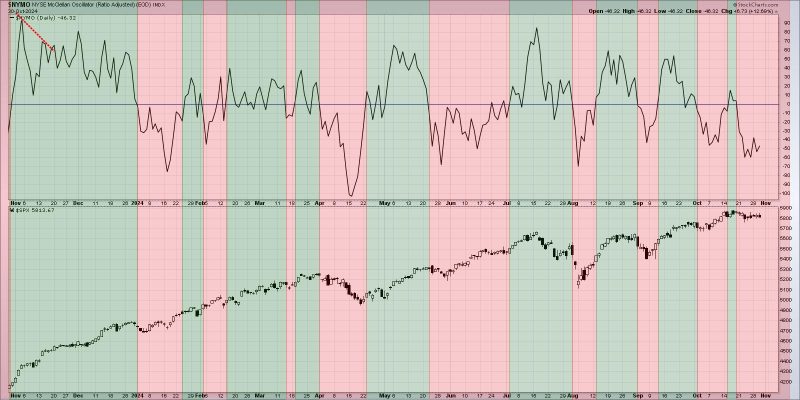
Bull Market Alert: Brace for Breadth Divergences Signaling a Reversal!
In the world of finance and investing, keeping a close eye on market indicators is crucial for making informed decisions. One such indicator that has been gaining attention recently is breadth divergences. But what exactly are breadth divergences, and could they signal the end of the bull market?
To understand breadth divergences, we must first grasp the concept of market breadth. Market breadth refers to the number of individual stocks participating in a market move, either upward or downward. A market with strong breadth implies that a large number of stocks are moving in the same direction as the overall market, indicating broad market strength. On the other hand, weak market breadth suggests that only a few stocks are driving the market, signifying potential fragility.
A breadth divergence occurs when the overall market index, such as the S&P 500, is making new highs or lows, but a significant number of individual stocks are not confirming that move. This lack of synchronization between the market index and individual stock performance can be a red flag for investors.
Historically, breadth divergences have been seen as warning signs of potential market reversals. When a bull market is fueled by only a handful of outperforming stocks, rather than a broad-based rally across various sectors, it could indicate that the market’s strength is unsustainable. In such cases, investors may want to exercise caution and consider adjusting their investment strategies to account for potential shifts in market sentiment.
However, it is important to note that breadth divergences are not foolproof indicators of an impending market downturn. Market dynamics are complex, influenced by various factors such as economic conditions, corporate earnings, geopolitical events, and investor sentiment. While breadth divergences can provide valuable insights into market internals, they should be used in conjunction with other fundamental and technical analysis tools to form a comprehensive view of market conditions.
In conclusion, breadth divergences can serve as a valuable tool for investors to assess the underlying strength of a market rally. By monitoring the participation of individual stocks in market movements, investors can gain a deeper understanding of market dynamics and potential risks. While breadth divergences may signal caution, they should be considered in the context of broader market trends and indicators to make well-informed investment decisions.
